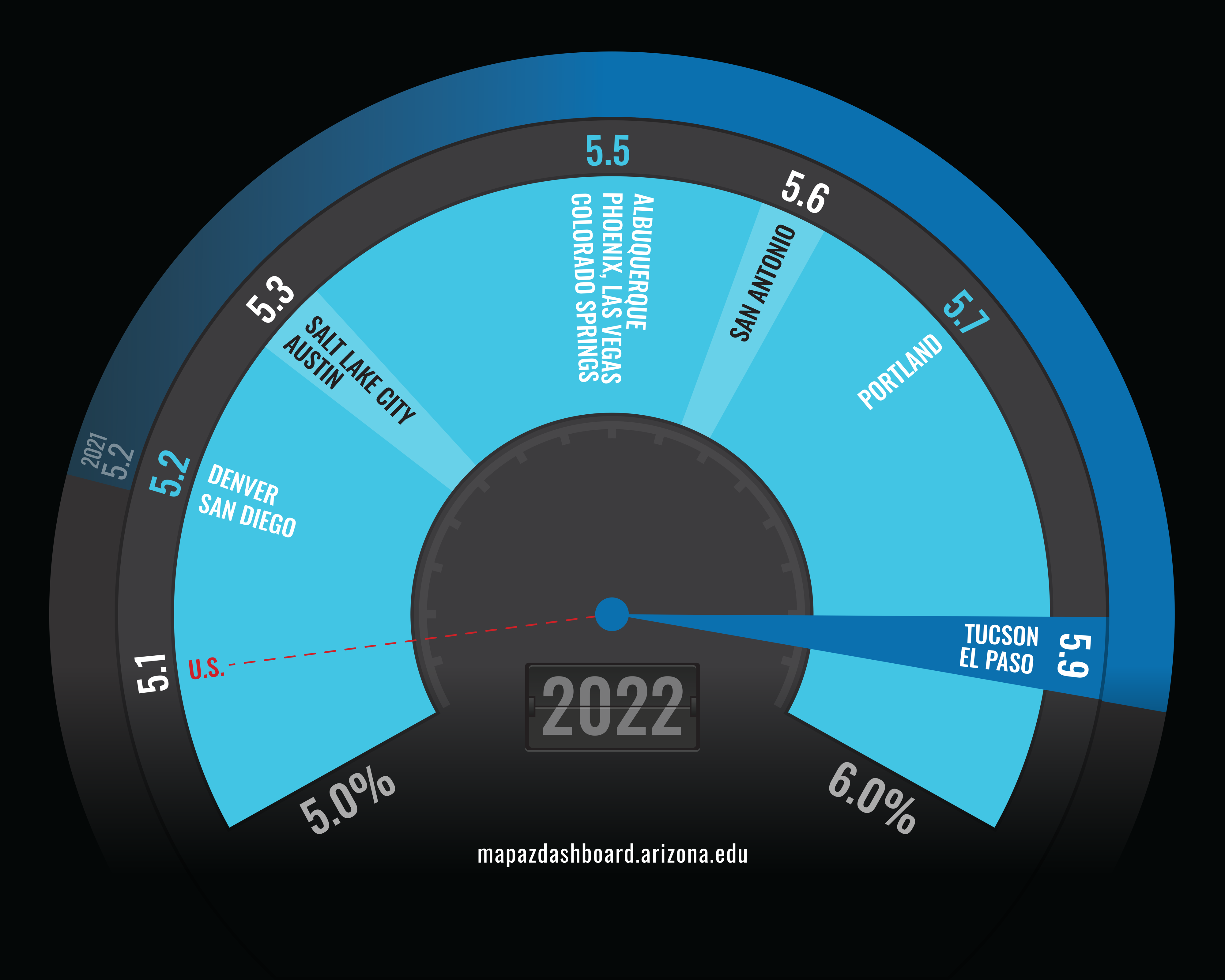 Explore Behavioral Health Data in Tucson, Arizona MSA
Explore Behavioral Health Data in Tucson, Arizona MSA
How are we doing?
Number of Poor Mental Health Days per Month (2022)

In 2022, those living in the Tucson Metropolitan Statistical Area (MSA) reported 5.9 poor mental health days each month. That was up by nearly a full day from 2021. Tucson ranked last among peers, tied with El Paso. The U.S. overall reported the lowest number of poor mental health days at 5.1. Denver and San Diego ranked first among peer metropolitan areas with 5.2 poor mental health days reported by their residents.
Why is it important?
Behavioral health, just like physical activity, is a key part of a person’s well-being. According to the Substance Abuse and Mental Health Service Administration (SAMHSA), behavioral health problems include substance use disorders; alcohol and drug addiction; and serious psychological distress, suicide, and mental disorders. Further, SAMHSA states that behavioral health also describes service systems that encompass prevention and promotion of emotional health; prevention of mental and substance use disorders; treatments and services for mental and substance use disorders; and recovery support.
Behavioral health conditions can affect an individual’s health, longevity, and productivity. Behavioral health conditions not only impact the individual who struggles with them daily, but also our local community. The Agency for Healthcare Research and Quality cites a cost of $57.5 billion in 2006 for mental health care in the U.S. However, much of this cost comes in the loss of income due to unemployment, expenses for social supports, and a range of indirect costs due to chronic disability.
The impact of behavioral health conditions on one’s health and longevity can be profound. According to the Centers for Disease Control and Prevention (CDC) excessive alcohol use is responsible for 88,000 deaths each year, while nearly half a million Americans die prematurely from smoking or exposure to secondhand smoke. Additionally, in 2016 the CDC found that another 16 million individuals live with a serious illness caused by smoking.
How do we compare?
Depression rates varied widely across the western states in 2021. Residents living in California reported the lowest rate of depression at 15.2% and those in Oregon reported the highest at 24.6%. Arizona had the third-lowest rate of depression among the 10 western states at 17.5%. Arizona’s reported rate of depression was also lower than the national rate of 20.5%.
In 2022, 19.1% of Tucson’s population reported that they excessively drink. Excessive drinking includes those that binge drink, heavy drinking, and any alcohol use by pregnant women or those younger than 21. Binge drinking is defined as women consuming four or more drinks or a man consuming five or more drinks on an occasion, while heavy drinking is eight or more drinks per week for a woman and 15 or more for a man. The percent of those in Tucson that excessively drink was nearly equal to the national rate of 19.6% and was lower than many of the peer western metros. Austin, Denver, Portland, and San Diego all had excessive drinking rates above 21.0%, to view the MSA data visit the Behavioral Health Comparison Page.
What are the key trends?
The percent of the population that reported smoking between 2011 and 2015 substantially declined in Tucson, the state of Arizona, and the U.S. In Tucson, the percentage of those who reported that they smoked increased between 2015 and 2018. Since 2018, the percent of those that reported smoking in Tucson has fluctuated but overall has displayed a downward trend. In 2022, the U.S. and the state of Arizona reported the lowest rate of those smoking in more than a decade.
How is it measured?
All data reported originates from the Behavioral Risk Factor Surveillance System (BRFSS). The BRFSS is a health-related telephone survey that collects state data about U.S. residents regarding their health-related risk behaviors, chronic health conditions, and use of preventative services. The BRFSS data presented is collected from the Centers for Disease Control and Prevention (CDC) and the County Health Rankings.












